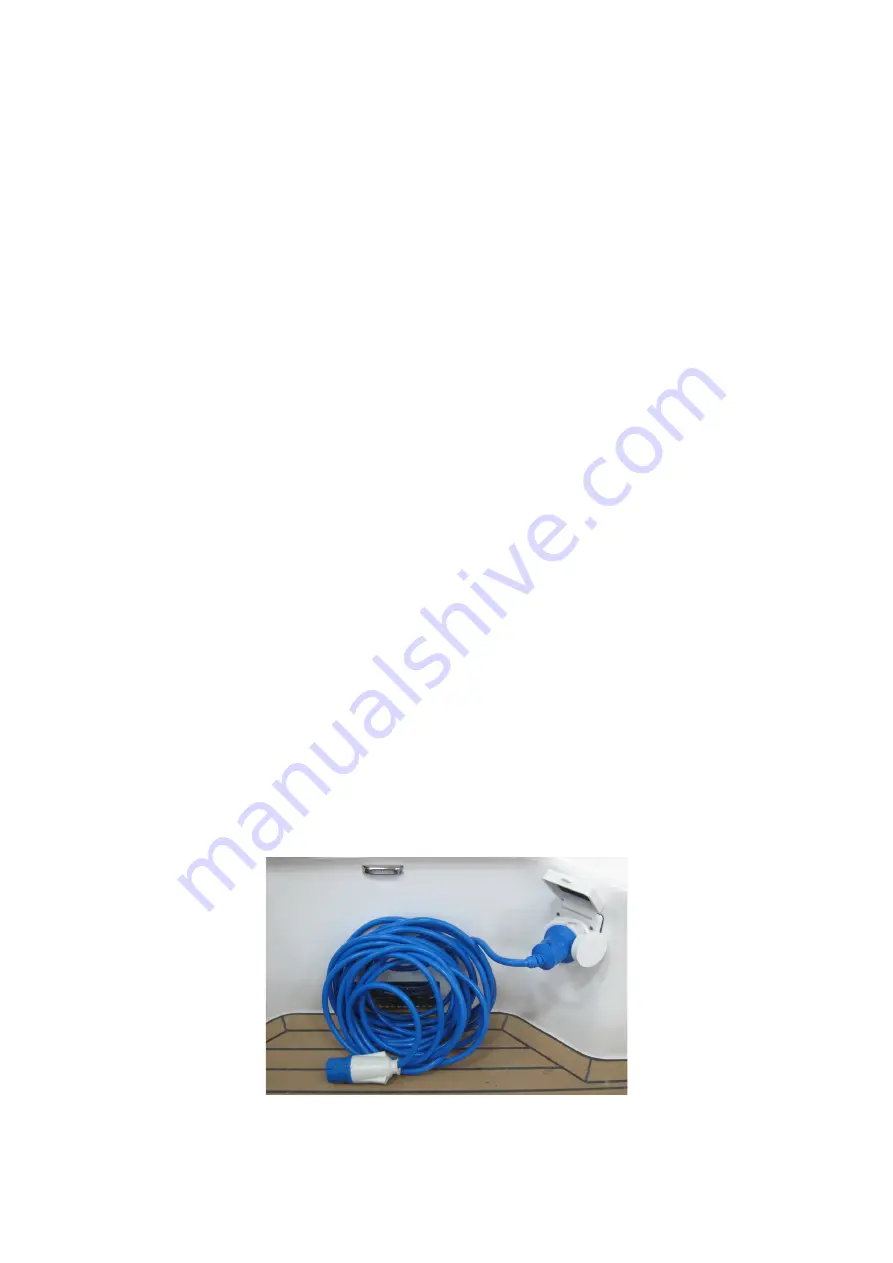
23CRUISE_OPEN 23ELECTRIC_OPEN – General manual
Charging Batteries
Batteries on the vessel can be charged in two ways:
•
with electricity from engine during navigation
•
with electricity from land
Charging batteries with electricity from engine during navigation is done automaticaly.
When engine runs it produce 12V DC energy which is reqired for proper engine function
and also for charging of batteries.
The procedure of charging the batteries with the electricity from land requires special
caution. As we know, using electricity is dangerous and by doing this near the water or
wet surfaces, it becomes increasingly dangerous and requires a higher amount if caution
than on land. Only a charger approved by the manufacturer should be used to charge the
batteries. If the charger breaks down or stops working for other reasons, consult the
manufacturer or supplier of the vessel before purchasing a new one. The use of a wrong
charger can lead to the overloading of the batteries or the charger, which can result in a
fire on board or other accidents.
During the charging of the batteries, pay special attention to the following:
•
the vessel must be firmly tied to the pier or anchored,
•
all electric current-users on board the vessel must be switched off (the main
switches of the current-users and the motor are positioned on „OFF“ ),
•
make sure that the feeder cable which connects the vessel to the electric current is
not damaged,
•
the feeder cable must not touch water,
•
the feeder cable must not hinder the movement around the vessel (it should not be
tightened across walking surfaces, thus posing a danger to pedestrians).
To charge batteries from land power 220V, take power cord from one of storages under
seats, and connect it to power socket on boat (as on picture below) and other end to
socket on shore.
www.alfastreet-marine.com
31
Picture 2: 230V charging power cord





























